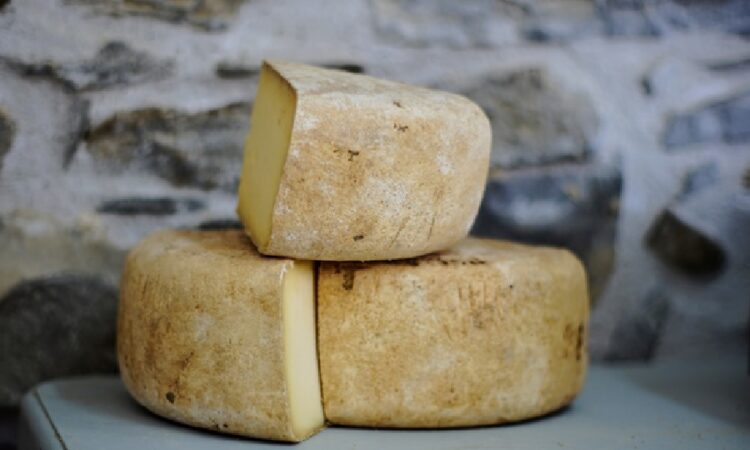
At a glance:
- Cheese ageing transforms texture and flavour while offering superior melting properties and enhancing flavours when paired with complementary ingredients.
- This characteristic makes it ideal for dishes like grilled cheese sandwiches, macaroni and cheese, and savoury fondues, enhancing their richness and decadence.
- Having a trusted dairy supplier can make a huge difference in the results you get after melting cheese.
Introduction:
Cheese is a versatile ingredient that brings depth and richness to countless dishes. But have you ever wondered what makes some cheese more flavoursome and complex than others? The answer lies in the fascinating process of cheese ageing. In this article, we will delve into the world of cheese ageing, explore the different types of ageing processes, and learn how understanding this process can greatly enhance your commercial cooking endeavours. But before we proceed, make sure you buy your cheese from a trusted wholesale dairy supplier to avoid any last-minute surprises.
The Cheese Ageing Process:
When it comes to cheese ageing, several factors come into play. Temperature, humidity, and microbial activity all play pivotal roles in the transformation of cheese. Enzymes and bacteria work their magic, breaking down proteins and sugars, which leads to the development of unique flavours and textures. Additionally, the ageing environment, including the type of ageing facility and storage conditions, greatly influences the final product.
Different Types of Cheese Ageing Processes:
Natural Rind Aging:
Natural rind ageing involves allowing the cheese to age without any additional interventions. The cheese is typically stored in a controlled environment, allowing it to develop its own protective rind. This process results in a natural, rustic flavour and texture profile.
Washed Rind Aging:
In washed rind ageing, the cheese is periodically washed or brushed with brine, wine, or other liquids. This technique promotes the growth of specific bacteria on the cheese’s surface, resulting in a distinct aroma and flavour. Washed rind cheeses often possess a creamy, sometimes pungent, interior and a reddish-orange rind.
Blue Cheese Aging:
Blue cheese ageing involves the introduction of mould spores into the cheese. As the cheese ages, the mould grows, creating characteristic blue or green veins throughout. This process imparts a bold, tangy flavour and a crumbly texture.
The Impact of Cheese Ageing on Commercial Cooking:
Changes in Cheese Texture and Flavour:
As cheese ages, its texture undergoes remarkable transformations. Firm and crumbly textures become more pronounced, adding depth and interest to dishes. Simultaneously, the flavours evolve, moving from mild and creamy to complex and intense. Aged cheeses boast a wide range of flavour profiles, from nutty and caramelised to sharp and tangy. Chefs can leverage these variations to create dishes that offer a symphony of tastes and textures. But the dairy supplier you source from also makes a huge difference in the quality of the cheese you get at the outset.
Cheese Melting Properties:
Aged cheese brings another advantage to commercial cooking: superior melting properties. The ageing process enhances the cheese’s ability to melt smoothly and evenly, elevating dishes such as grilled cheese sandwiches, macaroni and cheese, or savoury fondues. The melted aged cheese coats each ingredient, infusing it with a luxurious richness that tantalises the taste buds.
Cheese Pairing with Other Ingredients:
Pairing aged cheese with complementary ingredients is a true art form. The flavours and textures of aged cheese harmonise exquisitely with fruits, nuts, cured meats, and wines, creating a perfect balance on the palate. Imagine the delight of a tangy aged cheddar paired with crisp apple slices or the indulgence of a rich blue cheese alongside a drizzle of honey and a handful of toasted walnuts. By thoughtfully combining aged cheese with other elements, chefs can elevate salads, pizzas, and charcuterie boards to new heights of flavour complexity.
Conclusion:
Understanding the intricacies of cheese ageing, including the different types of ageing processes, opens up a world of culinary possibilities. By harnessing the changes in texture, flavour, and melting properties that occur during the ageing process, chefs and food service professionals can create unforgettable dishes that delight and surprise their customers. So, the next time you plan a menu, consider incorporating the depth and character of aged cheese. Make sure you thoroughly check the veracity of your wholesale dairy supplier to get the best quality cheese for your customers. Let your culinary creations shine with the exquisite flavours that only cheese ageing can bring.

